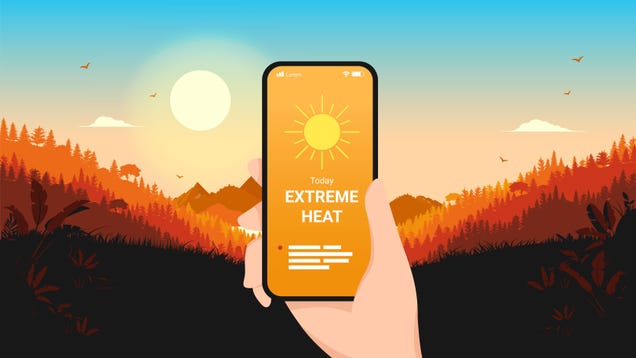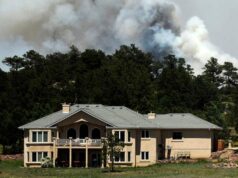
It feels like the 1930s all over again. We’re facing an economic depression and there’s a push for New Deal-style policies to recover from it. And according to a new study, we’ve also dramatically increased the likelihood of seeing the kinds of record-breaking heat waves that caused the Dust Bowl.
The Dust Bowl was a period of devastating drought and severe dust storms across the Great Plains from Montana to Texas. The main drivers of the devastation were two rare heat waves in 1934 and 1936, which still mark the hottest summers on record in the U.S.
It’s been well-documented that higher levels of greenhouse gases in the atmosphere have made heat waves more severe and more likely to occur. In a new study published in Nature Climate Change on Monday, researchers used climate simulations to see how much more likely 1930s-like heat waves are to occur under today’s atmospheric carbon concentrations.
Using an Oxford University climate model which runs on thousands of volunteers’ personal computers around the world, the researchers modeled more than 1,200 scenarios using ocean temperatures and carbon dioxide levels of the 1930s. The Dust Bowl heat waves were predominantly driven by warm ocean temperatures in the North Atlantic and cool temperatures in the tropical Pacific. That caused a ridge of high pressure to camp over the Plains, leading to sunny skies and excessive heat. The model runs showed that just one in 100 of the simulations run produced heat waves on the level of the 1930s, meaning heat waves of that magnitude were likely to occur just once every 100 years int he past.
Then, the researchers conducted another set of simulations. This time, they used current greenhouse gas levels and the 1930 sea surface temperature patterns to see how greenhouse gas pollution affected the likelihood of heat waves under similar conditions. They found that today’s greenhouse gas levels make Dust Bowl-type heat waves at least two and a half more likely in the U.S. today. That means under current carbon concentrations, we’re now likely to see them every 40 years.
“[That] may appear to be a long time,” Tim Cowan, a researcher at the University of Southern Queensland in Australia and lead author of the new study, told Earther in an email. “But we’re talking about record-breaking temperatures and heatwaves that last almost 3 weeks.”
The effects would be ruinous. The original Dust Bowl caused malnutrition and deadly disease, destroyed agriculture, and drove hundreds of thousands of farming families in 19 states to flee the area in search of farmland.
“We know from previous studies that a present-day Dust Bowl drought would significantly impact crop yields,” said Cowan, referring to a 2016 study that showed heat waves of this magnitude would create crop yield losses about 50 percent larger than those of the 2012 drought, which caused nearly $100 billion of damage to the U.S. economy. “So there are serious implications for food security.”
The researchers’ warnings are also backed up by a study published in April showed that the western U.S. has entered a megadrought, and a March study which showed Dust Bowl-like heat and drought in the U.S. could deplete the world’s wheat reserves by more than 75 million tons over four years. The only way to lessen our chances of seeing the kinds of droughts is to lower global carbon emissions, fast.
“Summertime maximum temperatures across continental US have warmed over 1 degree Fahrenheit since the 1950s, so unless there is rapid international action to curb greenhouse gas emissions, then we’d expect the Dust Bowl temperature records to be broken in the near future,” said Cowan.
Even if world leaders got it together immediately, though, that wouldn’t eliminate the potential for this kind of climate change-fueled heat, so we also need to adapt. We can do so by using agricultural practices that make crops more resilient, like planting cover crops to promote soil heath and practicing no-till farming to avoid erosion. Beyond the agricultural effects, we should also make people are equipped to handle the heat as best as possible. That could start with ensuring access to air conditioning and water.
“We have to learn to adapt to these types of heat extremes,” said Cowan. “Adaptation will be the key.”
Source: gizmodo.com








